Last week in my column on Jazz Kissa I touched on the joy of “listening to jazz in the commune of others.” There is something about being in a group or crowd, moving and being moved en masse by the same melody, solo, lyric, hook or beat, feeling the same (or similar) emotions, and being part of a group response to the music everyone is hearing.
Shift from records in a jazz bar to live jazz performance, and you can throw in direct group response to the players, and performers, energized, give-and-taking in return, all in real time.
Sadly, this has been a non-starter for over a year.

So what are the current alternatives for jazz lovers, and music fans in general? YouTube videos, Instagram Live, online performances (pay-per-view and free), classic live albums…
None as satisfying as the real thing, but we take what we can get.
For me the choice is live albums, communing with audiences from the distant and not-so-distant past and enjoying performances by some of the jazz greats.

This week I’ll share some of my favorites. There are a lot of great live recordings to choose from. Bill Evans’ 1961 Village Vanguard records (Sunday at the Village Vanguard and Waltz for Debbie) and 1968’s At the Montreux Jazz Festival. Wynton Kelly’s Smokin’ at the Half Note (with Wes Montgomery) from 1965. Any of Oscar Peterson’s 1961 London House session albums (including The Sound of the Trio and Something Warm). Ben Webster’s 1960 classic At the Renaissance. Stan Getz’s 1964 concert with Astrud Gilberto, Getz Au Go Go. And many more.
But these are the ones that I spin most often.
Miles Davis – My Funny Valentine (1965)
On February 12, 1964, Miles Davis and his quintet played the newly built Philharmonic Hall in New York as part of a benefit series supporting multiple civil rights groups and causes. At this time the quintet was still in transition; the rhythm section was settled, with Herbie Hancock on piano, Ron Carter on bass and Tony Williams on drums, but Miles was still searching for the right saxophonist. George Coleman had occupied the seat for about a year, but this would be his last recording with the group.

The general consensus in regard to this live performance was that the group – young and intimidated by both venue and importance of the cause – played too fast. Enough material was recorded for two albums, with the down-tempo numbers released a year later in February 1965 as My Funny Valentine, and the up-tempo numbers appearing in January 1966 on the companion Four & More. The up-tempo album does indeed sound rushed, but My Funny Valentine is an exquisite album, with inspired playing from all. Available at Amazon.
In the liner notes, Nat Hentoff describes Miles as having “duende,” meaning “the ability to transmit a profoundly felt emotion with a minimum of fuss and the maximum of restraint.” The emotional depth of this record is indeed profound but stated so simply and sparely that the effect is intensely powerful and beautiful. Miles is in the zone, Coleman plays out of his skin, and the collective stars align for a once-in-a-lifetime, perfect session.
Al Di Meola, Paco De Lucia and John McLaughlin – Friday Night in San Francisco (1981)
What do you get when you put the world’s (arguably) best flamenco guitarist, jazz fusion guitarist, and jazz-rock guitarist together in a trio? How about three duo and two trio performances that jazz author and critic Walter Kolosky called “the most influential of all live acoustic guitar albums” and compared in importance to the “infamous Benny Goodman Band performance at Carnegie Hall in 1938” (I haven’t heard that one, but the way he speaks about it, it must have been a blinder). That, and a landmark record with over 2 million copies sold.

Four of five tracks were recorded live at the Warfield Theatre in San Francisco on Friday, December 5, 1980, with the final track – Guardian Angel, recorded in studio in May of 1981. Playing is relaxed, energetic and fun, with masterful technique, rapid-fire runs and riffs, conversational respect and understanding between performers, and even humor with a brief play on the Pink Panther theme drawing a great reaction from the enthusiastic and appreciative audience, who must have sensed something special was happening that night. Recording quality, too, is brilliant with wonderful detail and dynamism captured for all time. Check Amazon.
Arne Domnérus – Jazz at The Pawnshop (1977)
Swedish jazz? No, that is not an oxymoron. Live Swedish jazz? That neither. Neophyte jazz listeners may be surprised to hear that one of the most iconic live jazz recording sessions ever took place over two nights at a jazz club in Stockholm — the Pawnshop in December 1976. But it did. These sessions resulted in the almost immediate release of the double album Jazz at The Pawnshop (available at Amazon), and two follow-up albums 15 years later.

The first release took the jazz world by storm, and the little Proprius label that recorded it had a hard time keeping up with demand. It sold like hotcakes, and amongst audiophiles became a reference recording for testing and evaluating turntables, CD and SACD players, amplifiers, speakers, even audio cables. The playing by a group of five relatively unknown Swedish jazz artists, led by Arne Domnérus, is wonderful, and the sound quality, as might be expected of an audiophile cult classic is exceptional.
Ron Carter – Foursight (2020)
If the three preceding records can be considered “classics” of the live jazz oeuvre, here’s a 21st century classic to add to the collection. With a Guinness record of over 2,200 recordings to his name as leader and sideman, Ron Carter needs no introduction. What is amazing is that he is still recording at the age of 84 and producing incredible music like that featured on Foursight (recorded at the ripe young age of 82). I mentioned this record in my write up on my favorite bassists a couple of weeks ago, and it has fast become a top pick in my collection.

Foursight was recorded on November 17, 2018 at Stockholm Jazz Club “Fasching,” with Renee Rosnes on grand piano, Jimmy Green on tenor sax and Payton Crossley on drums. Those three are admittedly not names known previously to me, but they’re fine musicians and form a tight grouping with Carter, showing great understanding and playing off each other to great effect.
As might be expected with Carter as leader, bass plays a lot more prominent role here than usual, providing not only rhythm and prominent solos, but taking on melody as well. The bulk of the program is made up of Carter compositions, with homage paid to Miles Davis with Joshua and My Funny Valentine (that tune again) and Chet Baker with You and the Night and the Music. There’s even some Bach in there.
Several volumes from this concert are available, with different tracks on each. The double vinyl (originally a limited release for Record Store Day 2020 and re-released a few months later) includes three tracks not included on the CD version, and a digital download version (sub-titled The Complete Stockholm Tapes) contains six tracks not available on the vinyl (including two more Miles tracks, Flamenco Sketches and Seven Steps to Heaven, both of which are stunning).
Digital versions (CD and download) present music without breaks between most numbers (which is how they were performed, with only key and rhythm changes indicating there was a shift from one piece to the next), while the vinyl release inserts breaks between sides.
And that’s a wrap.

The day will come, and hopefully it’s not too far off, when we can once again venture out and experience music in the flesh. Until then, I hope I’ve piqued your interest in some of these live recordings, and that you’ll give them a spin. If you have favorites of your own, I’d love to hear about them in the comments, or drop me a note at @audioloveyyc on Instagram.








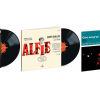
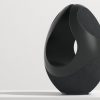



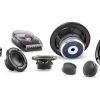

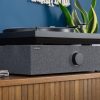









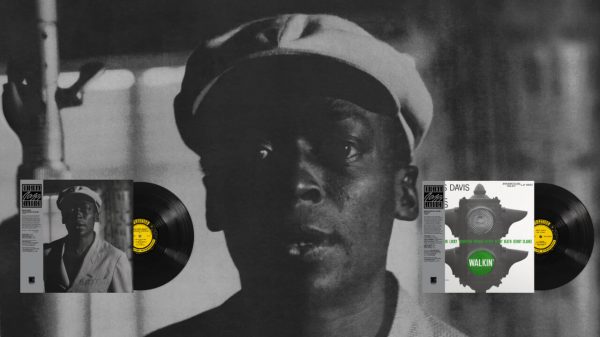
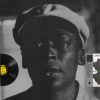



















ORT
February 28, 2022 at 12:47 pm
Jazz, real Jazz, is perhaps my favorite music after traditional popular song (e.g., Sinatra, Fitzgerald and McRae to name but three of the greats ).
But. Every one has a big but, so here comes mine.
I can not stand it when the musicians just go off the wall and lose the song to blow what sounds like a random scale session. It can be several minutes before they return to the song.
It reminds me of band class in the 6th grade. A bunch of kids just blowing notes. I suppose I should just sit there in the semi-darkness and nod my head and say stuff like, “Gooooovey, baby!” or, “Dig that extemporaneous blow! Canyewdigit? I knew that you could.”
Ummmm…Nope. As they might say in Scotland, “I canna dew it.” So when they do, do it. I just hit the FF and get past the spazz and back to the Jazz.
If that means I am never going to be hip, so be it. But I happen to like Jazz when it does not stray so far from the melody that if you just walked in on a song, you would walk out because it sounds like 6th grade band practice.
ORT
Ian White
February 28, 2022 at 2:13 pm
ORT,
I agree with you on this. I like really structured pieces. The improvisation can be fine depending on the artist, but when it becomes a 20-minute Grateful Dead song — I’m definitely moving on.
Ian
Mike Cornell
March 1, 2022 at 3:28 am
What gets me is sax players who try to make their sax sound like they just stepped on a cat! That’s about as enticing as fingernails on a chalkboard. Some good picks in there, Eric. I’ll definitely check them out. Miss live jazz too.
Eric Pye
March 26, 2022 at 6:52 pm
Thanks Mike. Yeah, I’m with you; play a tune and make it beautiful!
Alex
March 27, 2022 at 9:23 am
Hi and thanks for the post!
I wanted to refer to your earlier article on the Jazz Kissa and the link does not work…
Any suggestions??
cheers
Alex
Ian White
March 27, 2022 at 10:39 am
Alex,
It’s being republished on Monday.
Ian